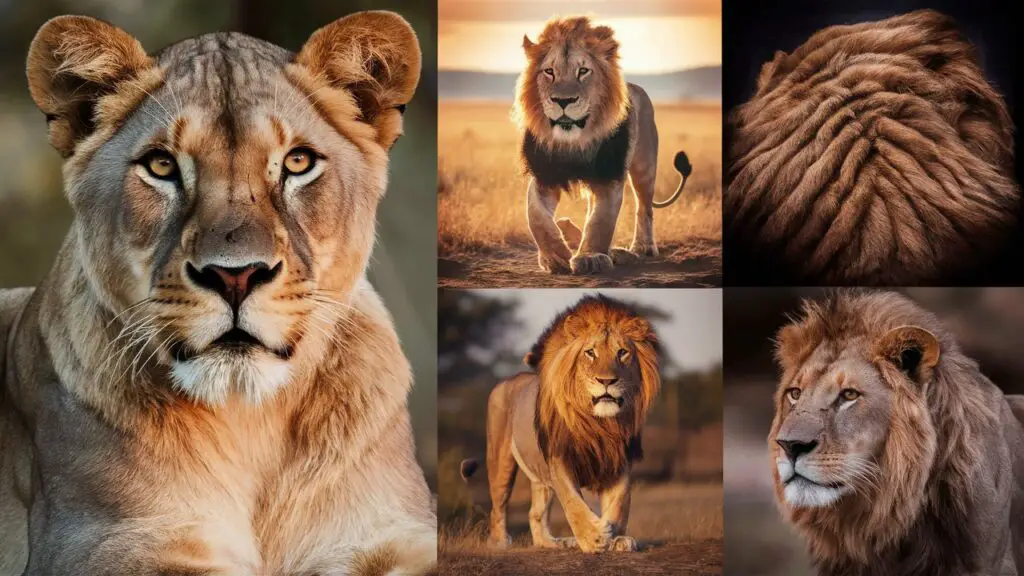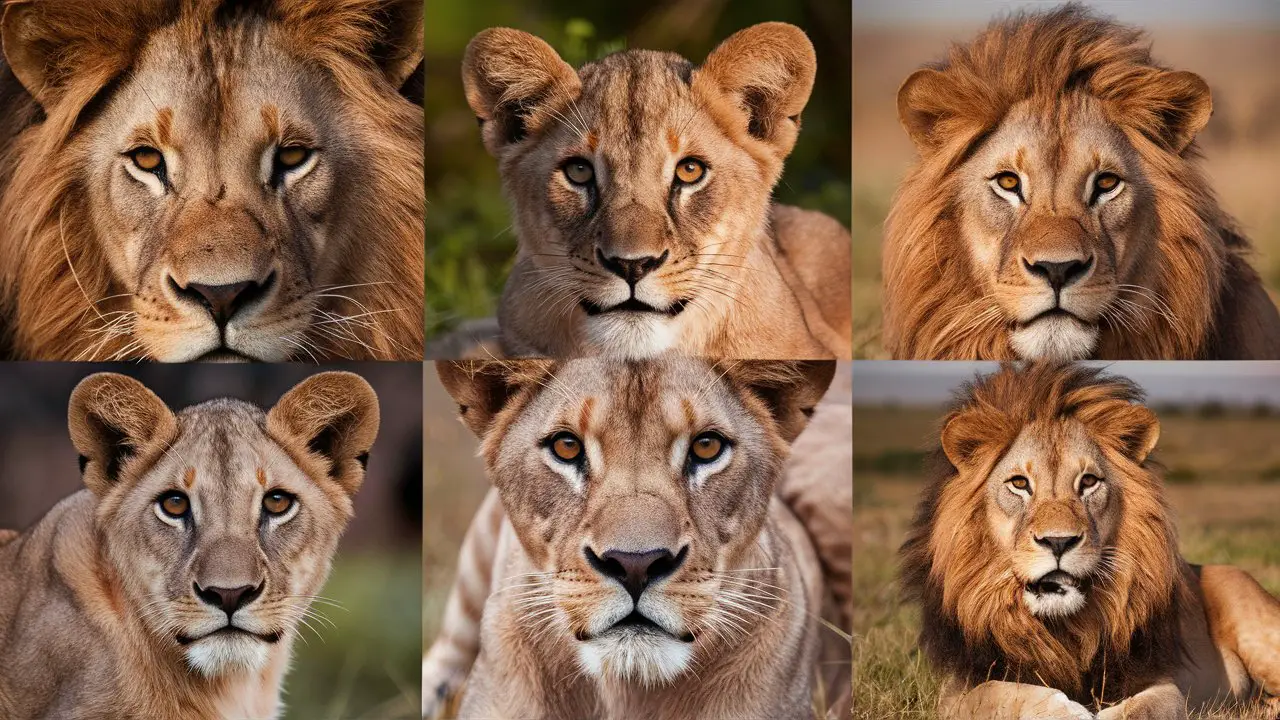As a majestic king of the jungle, lions capture our imagination and awe. But how much do you really know about these magnificent big cats beyond their fierce roars and hunting prowess? Lions have a complex social structure, surprising adaptations, and unique behaviors that will fascinate any wildlife enthusiast. In this article, you will discover 10 captivating facts about lions that will give you new insight into the lives of these regal predators. From the critical role of lioness prides to the incredible phenomenon of male coalitions, prepare to be amazed as you uncover surprising truths about one of nature’s most revered creatures. Let this foray into the remarkable world of lions spark your curiosity and expand your knowledge of these wild yet regal animals.
Lions Are the Only Truly Social Cats
As the only cats that live together in groups, lions are unique among felines in their social structure and hunting behaviors.###Pride Life Lions are the only cats that live in organized social groups called prides. A pride typically consists of 5 to 30 lions, made up of related females, their cubs, and a small number of males. The females, known as lionesses, remain in the pride for life. They work together to raise cubs and hunt prey. Male lions leave their birth pride when they reach maturity and live alone or in small groups until they take over a new pride.
Cooperative Hunting
Unlike most cats that are solitary hunters, lionesses hunt cooperatively in their prides. They work together systematically to stalk and ambush large prey like zebra, wildebeest, and buffalo. Coordinating their efforts, lionesses encircle their prey and attack from multiple sides. This cooperative hunting allows the pride to take down large prey that feeds the entire group. The male lions, though not typically involved in the actual hunt, also share in the kill and help defend the pride’s territory.
Complex Social Interactions
The complex social behaviors and interactions within a lion pride are unmatched in the feline world. Lionesses raise cubs together, grooming and feeding each other’s young. Males form coalitions to take over new prides, and then work together to defend their territory and females from other males. The intricate web of relationships within a pride shapes all aspects of lion life and helps ensure the survival of this remarkable social cat.
Male Lions Are Lazy – Females Do All the Hunting
Females Hunt and Provide Prey
Female lions, called lionesses, do the majority of hunting for their pride. They are responsible for catching and providing prey for the pride, which can include up to three males, a dozen females, and their cubs. The lionesses work together in a cooperative manner to hunt fleet-footed prey like zebra, wildebeest, and antelope. Their teamwork and skills make them formidable hunters with a success rate of about 30% for most hunts.
Males Guard Territory and Eat First
While the lionesses are away hunting, the male lions, called lions, remain at the pride’s territory. Their role is to protect the pride’s territory from intruding males. However, once the lionesses return with prey, the males always get to eat first before the rest of the pride. The males consume up to 40 pounds of meat in one sitting since they never know when their next meal will be provided. After the males have eaten their fill, the females and cubs will feed on the remaining carcass.
Different Roles but Mutual Dependence
Although male and female lions play very different roles within the pride, they depend on each other. The males rely on the hunting prowess of the lionesses to provide prey, while the lionesses rely on the males to defend the territory and protect the cubs from harm. This division of labor and mutual dependence has allowed lion prides to become one of the most successful social carnivores in Africa. The cooperation between the sexes highlights why lions are such formidable predators and have dominated the African savannas.
Lions Can Sleep Up to 20 Hours a Day
Lions are known for being apex predators that spend much of their time hunting and patrolling their territory. However, what some may not realize is that lions are actually quite lethargic and spend a significant portion of their day sleeping or resting. Adult lions can sleep up to 20 hours a day due to their low energy requirements and the demanding nature of hunting.
Low Energy Requirements
Lions have a slow metabolism for their large size, which means they do not require as much food to fuel their energy needs. After consuming a large meal, a lion can go for days without eating again. Their low energy requirements allow them to remain less active for longer periods. Lions mainly hunt large prey that provide several pounds of meat, enabling them to feed infrequently without adverse effects.
Hunting is Demanding
Although lions seem to lounge for a majority of their day, hunting requires an immense amount of energy. Lions may travel up to six miles per night while hunting and patrol up to 100 square miles of territory. The act of hunting itself involves stalking prey, chasing, and a final attack, which can last up to a few minutes. After a successful hunt, lions will feed on their kill for several days before hunting again. The extended rest periods allow lions to conserve energy between hunts.
Pride Dynamics
In prides, lionesses do most of the hunting while males primarily defend the territory and cubs. Lionesses will take turns hunting, allowing others to rest, which contributes to the many hours of inactivity. After feeding on a fresh kill, the entire pride, including males, will remain in the same area for days resting and bonding. The pride dynamics and division of labor result in an efficient system where some lions can remain sleeping while others hunt or patrol.
In conclusion, lions have adapted biologically and socially to balance demanding periods of hunting and activity with extended rest. Their low energy lifestyle and infrequent feeding facilitate many hours of sleep each day, up to 20 hours for some individuals. For lions, resting is not merely laziness but rather a necessity to conserve energy between essential tasks.
Lions Are the Second Largest Cat Species
Lions are the second largest felines after tigers. An average male lion weighs between 330 to 550 pounds, while females weigh between 265 to 395 pounds. The largest lion ever recorded weighed 826 pounds. Lions are characterized by muscular, deep-chested bodies, short-rounded heads, and a hairy tuft at the end of their tails.
Impressive Physique
Lions have a well-built physique that allows them to overpower large prey. Their muscular front legs and razor-sharp retractable claws provide them the strength and agility to knock down and hold onto struggling prey. An adult lion can run up to 35 miles per hour in short bursts, allowing them to chase and catch fleeing prey over short distances.
Dominant Males
Male lions, known as lions, are significantly larger in size and weight compared to females. The mane, a distinguishing feature found only in males, makes the lion appear even larger. The mane protects the lion’s neck during fights with rivals and other males. Only a few male lions within a pride mate and breed with the females. The dominant males, usually a coalition of two or three males, gain breeding rights through aggressive behavior and fighting.
Hunting in Packs
Although lions are large and powerful, they are more successful hunters when working together in a pride. Lionesses do most of the hunting for the pride in a cooperative group. They stalk and ambush their prey, going after large animals like buffalo, zebra and wildebeest. The lionesses encircle the prey and attack from all sides, overpowering the animal through force and numbers. The males rarely join in the hunt, instead guarding the pride’s territory and cubs while the females hunt.
The impressive physique, social dominance of males, and cooperative hunting behaviors of lions have allowed them to become one of the most successful predators in Africa. Although populations have declined significantly, lions remain an iconic symbol of strength and courage.

A Lion’s Roar Can Be Heard Over 5 Miles Away
The roar of a lion is one of the most iconic sounds in the animal kingdom. An adult male lion’s roar can travel over 5 miles across the African savanna, allowing the lion to communicate with prides up to 10 miles away. The roar serves several purposes, including proclaiming the lion’s territory, intimidating rivals, and calling other lions.
A Powerful Form of Communication
A lion’s roar is an efficient way for the lion to make its presence known over a large area. The low-frequency sounds can travel long distances without significant distortion. Each lion has a unique roar that allows prides to identify individuals from a distance. Lions use a variety of roars and calls to communicate different messages. A full-throated roar is used to proclaim territory and warn off intruders, while a “grunt-roar” is used as a greeting for pride members. Softer grunts, growls, and purrs are used between lions with close social bonds.
A Show of Power and Strength
The lion’s roar is a way for the lion to demonstrate its power and dominance. A male lion will roar loudly and frequently when patrolling the borders of its territory to intimidate rival males and warn them off. The volume and frequency of roaring also increases when there are females in heat nearby, as the male lion is proclaiming its virility and fitness as a mate. The roar is a way for a male lion to avoid direct confrontation while still establishing its dominance.
A Beacon for Pride Members
Both male and female lions use roaring as a way to locate pride members who may be out of sight. A lion can identify the roar of pride members and will often roar in response to call others back to the pride. Females use roaring more frequently when they have cubs to help keep the pride together and ensure protection for the young. The social nature of lions and their use of roaring highlights the importance of vocal communication and auditory recognition within the pride system.
In summary, the lion’s roar serves as a powerful form of long-distance communication that allows lions to proclaim territory, intimidate rivals, locate pride members, and strengthen social bonds. The impressive volume and reach of a lion’s roar reflects the lion’s status as the undisputed king of beasts.
The Importance of Lion Conservation
Lions face many threats in the modern world that have led to steep population declines. Some of the main issues are:
- Habitat loss. As humans expand cities and agricultural lands, lion habitat is destroyed.
- Conflict with humans. When lions prey on livestock, farmers may poison or shoot the lions in retaliation.
- Declining prey populations. As prey species such as gazelles and zebras face habitat loss and poaching, there is less for lions to hunt.
- Illegal wildlife trade. Lions are poached for their body parts which are used in traditional medicines and cultural practices.
In order to ensure that future generations can experience the wonders of lions roaring across the African savannah, conservation efforts must address these threats. Steps like:
- Protecting and expanding nature reserves.
- Educating local communities about living in harmony with lions.
- Reducing conflict by compensating farmers for lost livestock.
- Strengthening laws against poaching and illegal wildlife trade.
With hard work and dedication, there is hope that conservation efforts can help stabilize and even grow lion populations over time. The lion’s roar will continue to inspire awe in humans for millennia to come, but only if we take action now to give these kings of beasts a fighting chance at survival.
‘King of the Jungle’ in its natural habitat. As apex predators that play an integral role in their ecosystems, lions warrant our respect and protection. After learning more about their little-known traits and abilities, your perspective on these iconic animals is likely expanded. With greater awareness comes greater appreciation for the diversity of life on our planet.
As you now know, lions face many threats in the modern world that have reduced their numbers. Fortunately, there are concrete actions we can take to help protect these majestic animals.
How You Can Help
- Spread awareness. Tell friends and family about the issues lions face and ways they can help. The more people who care, the bigger impact we can make.
- Support conservation organizations. Donate money, volunteer your time or spread the word about groups working to protect lions and their habitats. Even small contributions can fund important initiatives.
- Reduce consumption. By minimizing your environmental impact in daily life, you indirectly help lion conservation by reducing threats like habitat loss and climate change. Consider things like reducing meat consumption, recycling and using less water.
- Write to officials. Contact government representatives and express your support for policies that protect lions and wildlife. Your voice can influence decisions that impact lions for years to come.
Every small action counts. By educating others, donating what you can, making sustainable choices and speaking up for lion conservation, you join a global effort to ensure lions live on for generations. Together, we can give these iconic animals a fighting chance at survival in the wild..
Don’t Miss a Thing! Enhance Your Wildlife Photography with Ultra-X Night Vision Goggles.
GET NOW!

Conclusion
As we have seen, lions have a complex social structure and hunting strategies that help them thrive in the wild. Their symbolic importance across human cultures also speaks to something primal in our understanding of these majestic creatures. With continued conservation efforts, hopefully future generations will be able to appreciate the ‘King of the Jungle’ in its natural habitat. As apex predators that play an integral role in their ecosystems, lions warrant our respect and protection. After learning more about their little-known traits and abilities, your perspective on these iconic animals is likely expanded. With greater awareness comes greater appreciation for the diversity of life on our planet.





